Chrysler 2008 Annual Report Download - page 118
Download and view the complete annual report
Please find page 118 of the 2008 Chrysler annual report below. You can navigate through the pages in the report by either clicking on the pages listed below, or by using the keyword search tool below to find specific information within the annual report.-
 1
1 -
 2
2 -
 3
3 -
 4
4 -
 5
5 -
 6
6 -
 7
7 -
 8
8 -
 9
9 -
 10
10 -
 11
11 -
 12
12 -
 13
13 -
 14
14 -
 15
15 -
 16
16 -
 17
17 -
 18
18 -
 19
19 -
 20
20 -
 21
21 -
 22
22 -
 23
23 -
 24
24 -
 25
25 -
 26
26 -
 27
27 -
 28
28 -
 29
29 -
 30
30 -
 31
31 -
 32
32 -
 33
33 -
 34
34 -
 35
35 -
 36
36 -
 37
37 -
 38
38 -
 39
39 -
 40
40 -
 41
41 -
 42
42 -
 43
43 -
 44
44 -
 45
45 -
 46
46 -
 47
47 -
 48
48 -
 49
49 -
 50
50 -
 51
51 -
 52
52 -
 53
53 -
 54
54 -
 55
55 -
 56
56 -
 57
57 -
 58
58 -
 59
59 -
 60
60 -
 61
61 -
 62
62 -
 63
63 -
 64
64 -
 65
65 -
 66
66 -
 67
67 -
 68
68 -
 69
69 -
 70
70 -
 71
71 -
 72
72 -
 73
73 -
 74
74 -
 75
75 -
 76
76 -
 77
77 -
 78
78 -
 79
79 -
 80
80 -
 81
81 -
 82
82 -
 83
83 -
 84
84 -
 85
85 -
 86
86 -
 87
87 -
 88
88 -
 89
89 -
 90
90 -
 91
91 -
 92
92 -
 93
93 -
 94
94 -
 95
95 -
 96
96 -
 97
97 -
 98
98 -
 99
99 -
 100
100 -
 101
101 -
 102
102 -
 103
103 -
 104
104 -
 105
105 -
 106
106 -
 107
107 -
 108
108 -
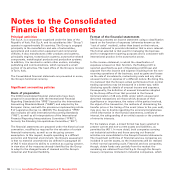 109
109 -
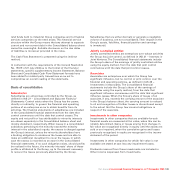 110
110 -
 111
111 -
 112
112 -
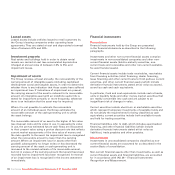 113
113 -
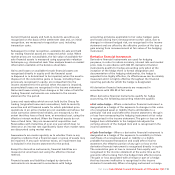 114
114 -
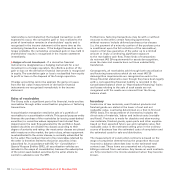 115
115 -
 116
116 -
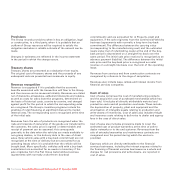 117
117 -
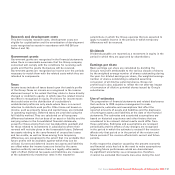 118
118 -
 119
119 -
 120
120 -
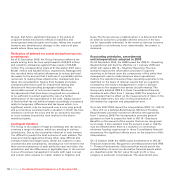 121
121 -
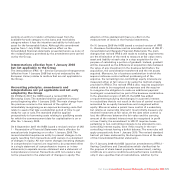 122
122 -
 123
123 -
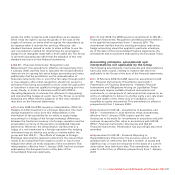 124
124 -
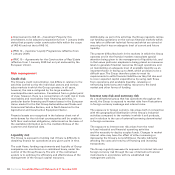 125
125 -
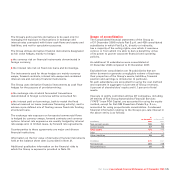 126
126 -
 127
127 -
 128
128 -
 129
129 -
 130
130 -
 131
131 -
 132
132 -
 133
133 -
 134
134 -
 135
135 -
 136
136 -
 137
137 -
 138
138 -
 139
139 -
 140
140 -
 141
141 -
 142
142 -
 143
143 -
 144
144 -
 145
145 -
 146
146 -
 147
147 -
 148
148 -
 149
149 -
 150
150 -
 151
151 -
 152
152 -
 153
153 -
 154
154 -
 155
155 -
 156
156 -
 157
157 -
 158
158 -
 159
159 -
 160
160 -
 161
161 -
 162
162 -
 163
163 -
 164
164 -
 165
165 -
 166
166 -
 167
167 -
 168
168 -
 169
169 -
 170
170 -
 171
171 -
 172
172 -
 173
173 -
 174
174 -
 175
175 -
 176
176 -
 177
177 -
 178
178 -
 179
179 -
 180
180 -
 181
181 -
 182
182 -
 183
183 -
 184
184 -
 185
185 -
 186
186 -
 187
187 -
 188
188 -
 189
189 -
 190
190 -
 191
191 -
 192
192 -
 193
193 -
 194
194 -
 195
195 -
 196
196 -
 197
197 -
 198
198 -
 199
199 -
 200
200 -
 201
201 -
 202
202 -
 203
203 -
 204
204 -
 205
205 -
 206
206 -
 207
207 -
 208
208 -
 209
209 -
 210
210 -
 211
211 -
 212
212 -
 213
213 -
 214
214 -
 215
215 -
 216
216 -
 217
217 -
 218
218 -
 219
219 -
 220
220 -
 221
221 -
 222
222 -
 223
223 -
 224
224 -
 225
225 -
 226
226 -
 227
227 -
 228
228 -
 229
229 -
 230
230 -
 231
231 -
 232
232 -
 233
233 -
 234
234 -
 235
235 -
 236
236 -
 237
237 -
 238
238 -
 239
239 -
 240
240 -
 241
241 -
 242
242 -
 243
243 -
 244
244 -
 245
245 -
 246
246 -
 247
247 -
 248
248 -
 249
249 -
 250
250 -
 251
251 -
 252
252 -
 253
253 -
 254
254 -
 255
255 -
 256
256 -
 257
257 -
 258
258 -
 259
259 -
 260
260 -
 261
261 -
 262
262 -
 263
263 -
 264
264 -
 265
265 -
 266
266 -
 267
267 -
 268
268 -
 269
269 -
 270
270 -
 271
271 -
 272
272 -
 273
273 -
 274
274 -
 275
275 -
 276
276 -
 277
277 -
 278
278 -
 279
279 -
 280
280 -
 281
281 -
 282
282 -
 283
283 -
 284
284 -
 285
285 -
 286
286 -
 287
287 -
 288
288 -
 289
289 -
 290
290 -
 291
291 -
 292
292 -
 293
293 -
 294
294 -
 295
295 -
 296
296 -
 297
297 -
 298
298 -
 299
299 -
 300
300 -
 301
301 -
 302
302 -
 303
303 -
 304
304 -
 305
305 -
 306
306 -
 307
307 -
 308
308 -
 309
309 -
 310
310 -
 311
311 -
 312
312 -
 313
313 -
 314
314 -
 315
315 -
 316
316 -
 317
317 -
 318
318 -
 319
319 -
 320
320 -
 321
321 -
 322
322 -
 323
323 -
 324
324 -
 325
325 -
 326
326 -
 327
327 -
 328
328 -
 329
329 -
 330
330 -
 331
331 -
 332
332 -
 333
333 -
 334
334 -
 335
335 -
 336
336 -
 337
337 -
 338
338 -
 339
339 -
 340
340 -
 341
341 -
 342
342 -
 343
343 -
 344
344 -
 345
345 -
 346
346 -
 347
347 -
 348
348 -
 349
349 -
 350
350 -
 351
351 -
 352
352 -
 353
353 -
 354
354 -
 355
355 -
 356
356
 |
 |
Fiat Group Consolidated Financial Statements at 31 December 2008 117
Research and development costs
This item includes research costs, development costs not
eligible for capitalisation and the amortisation of development
costs recognised as assets in accordance with IAS 38 (see
Notes 4 and 14).
Government grants
Government grants are recognised in the financial statements
when there is reasonable assurance that the Group company
concerned will comply with the conditions for receiving such
grants and that the grants themselves will be received.
Government grants are recognised as income over the periods
necessary to match them with the related costs which they are
intended to compensate.
Ta x e s
Income taxes include all taxes based upon the taxable profits
of the Group. Taxes on income are recognised in the income
statement except to the extent that they relate to items directly
charged or credited to equity, in which case the related income
tax effect is recognised in equity. Provisions for income taxes
that could arise on the distribution of a subsidiary’s
undistributed profits are only made where there is a current
intention to distribute such profits. Other taxes not based on
income, such as property taxes and capital taxes, are included
in operating expenses. Deferred taxes are provided using the
full liability method. They are calculated on all temporary
differences between the tax base of an asset or liability and the
carrying values in the Consolidated financial statements,
except for those arising from non tax-deductible goodwill and
for those related to investments in subsidiaries where their
reversal will not take place in the foreseeable future. Deferred
tax assets relating to the carry-forward of unused tax losses
and tax credits, as well as those arising from temporary
differences, are recognised to the extent that it is probable that
future profits will be available against which they can be
utilised. Current and deferred income tax assets and liabilities
are offset when the income taxes are levied by the same
taxation authority and where there is a legally enforceable
right of offset. Deferred tax assets and liabilities are measured
at the substantively enacted tax rates in the respective
jurisdictions in which the Group operates that are expected to
apply to taxable income in the periods in which temporary
differences will be reversed.
Dividends
Dividends payable are reported as a movement in equity in the
period in which they are approved by shareholders.
Earnings per share
Basic earnings per share are calculated by dividing the
Group’s net profit attributable to the various classes of shares
by the weighted average number of shares outstanding during
the year. For diluted earnings per share, the weighted average
number of shares outstanding is adjusted assuming
conversion of all dilutive potential shares. Group net
profit/(loss) is also adjusted to reflect the net after-tax impact
of conversion of dilutive potential shares issued by Group’s
subsidiaries.
Use of estimates
The preparation of financial statements and related disclosures
that conform to IFRS requires management to make
judgements, estimates and assumptions that affect the
reported amounts of assets and liabilities and the disclosure
of contingent assets and liabilities at the date of the financial
statements. The estimates and associated assumptions are
based on historical experience and other factors that are
considered to be relevant. Actual results could differ from
those estimates. Estimates and assumptions are reviewed
periodically and the effects of any changes are recognised
in the period in which the estimate is revised if the revision
affects only that period or in the period of the revision and
future periods if the revision affects both current and future
periods.
In this respect the situation caused by the present economic
and financial crisis has led to the need to make assumptions
regarding future performance which are characterised
by significant uncertainty; as a consequence, therefore,
it cannot be excluded that results may arise during the next
